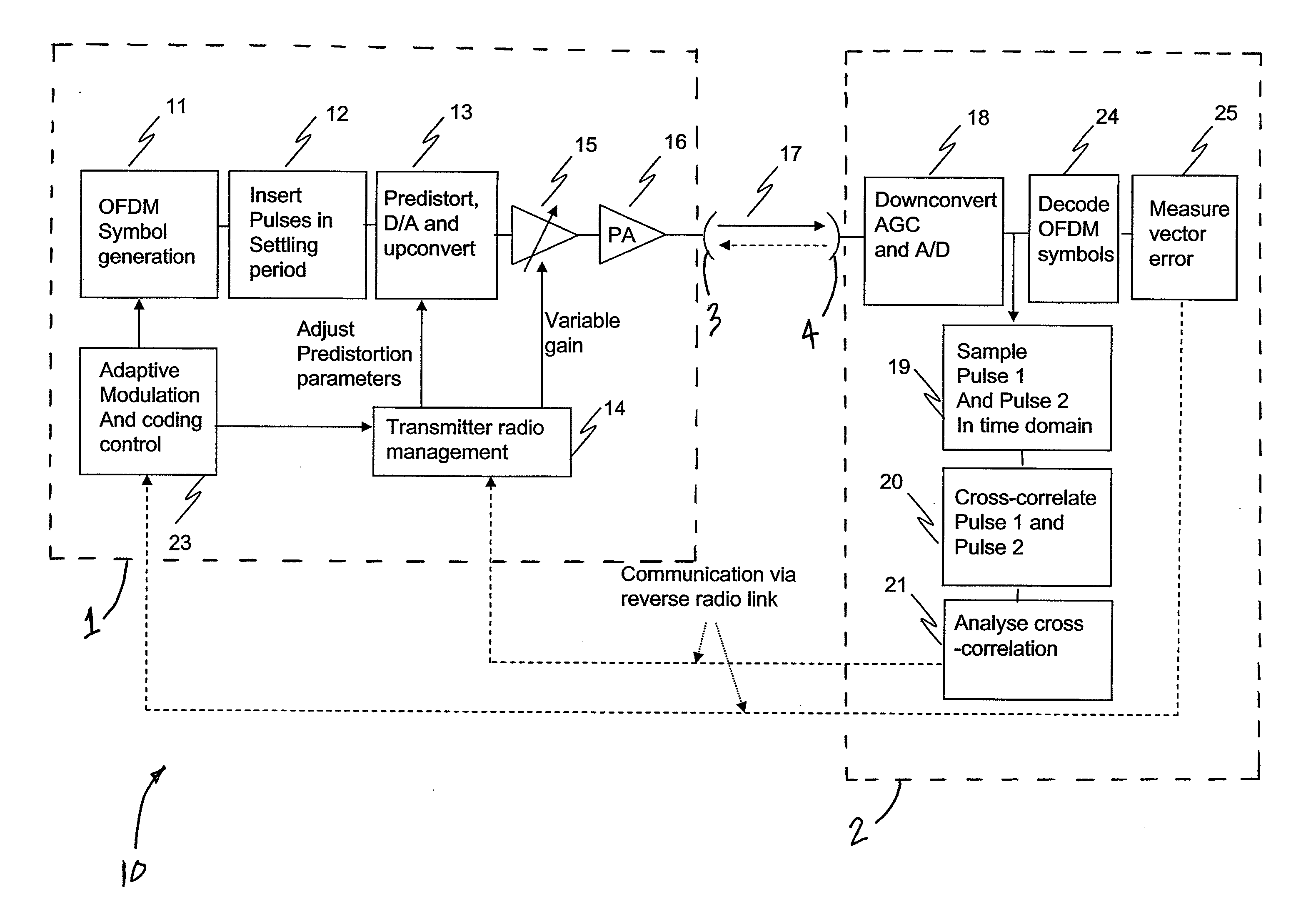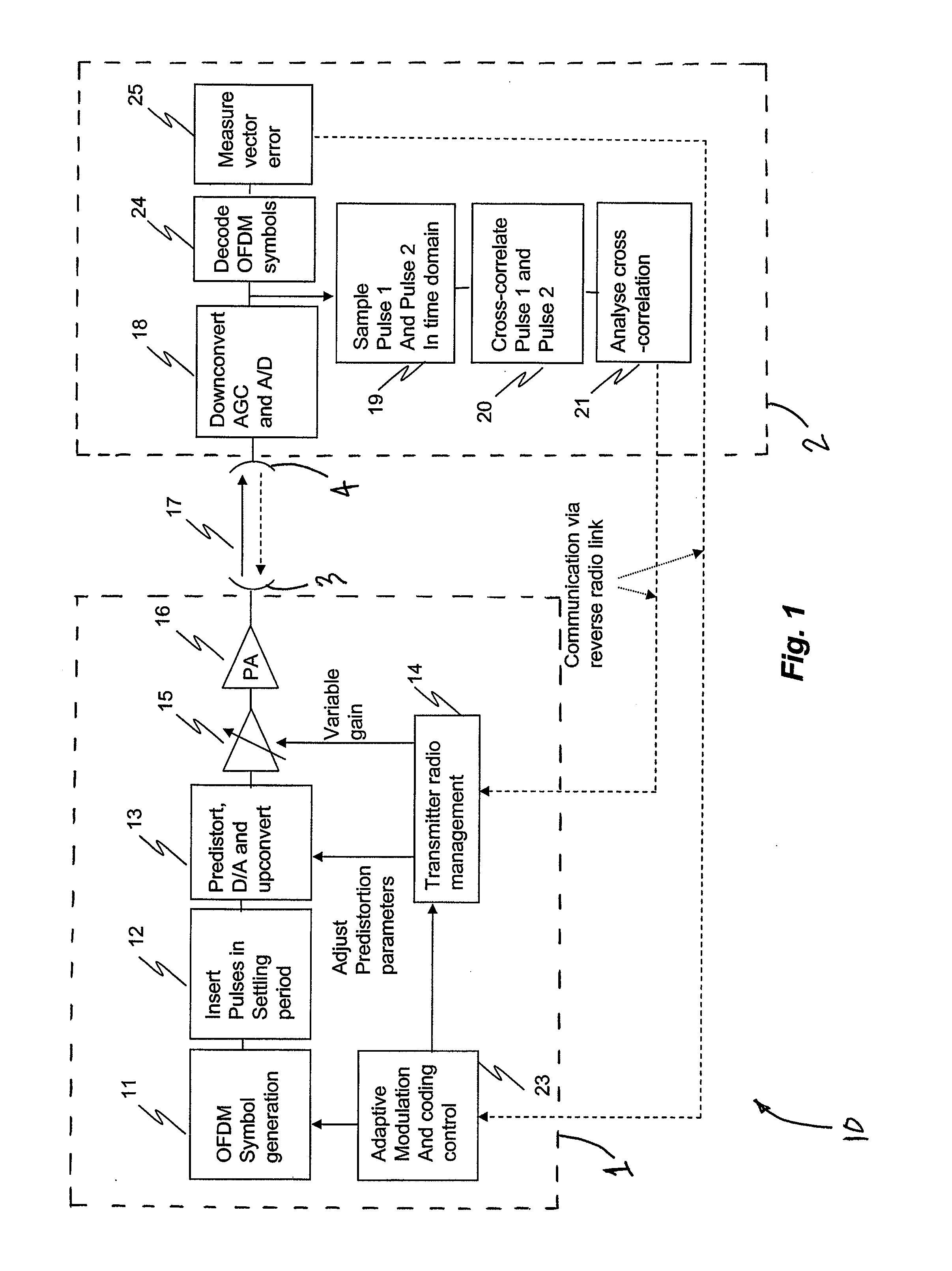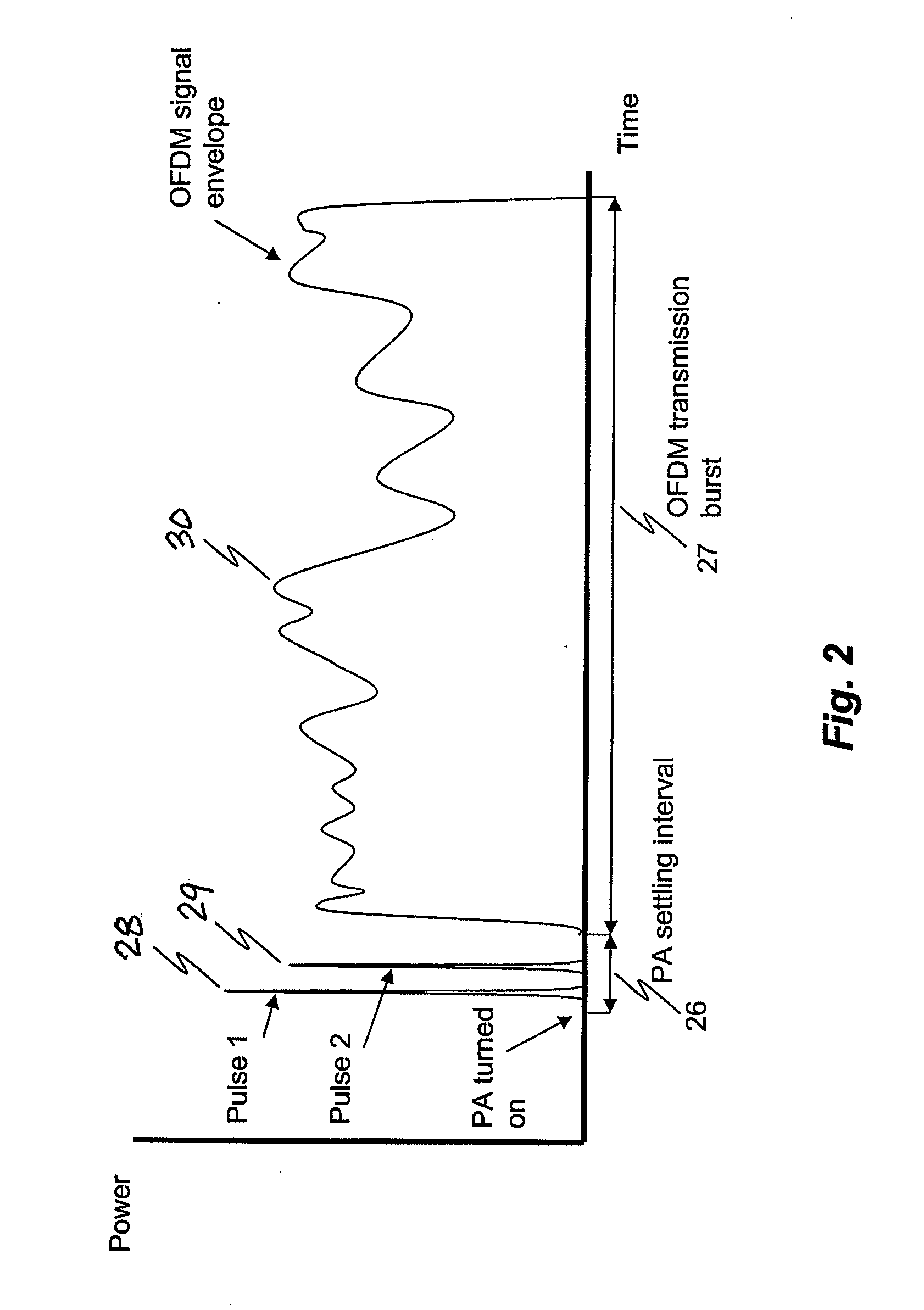Transmission power optimization
- Summary
- Abstract
- Description
- Claims
- Application Information
AI Technical Summary
Benefits of technology
Problems solved by technology
Method used
Image
Examples
Embodiment Construction
[0018]A system and method is disclosed for maximizing the transmission power provided by a wireless broadband communications system over a variable data rate, time division duplex (TDD), adaptively modulated, point-to-point radio link. The presently disclosed system and method may be employed by the wireless communications system to determine how close a transceiver's power amplifier is to non-linear operation, and to set the transmission power of the power amplifier to a maximal level to achieve an acceptable level of distortion at the amplifier output. The wireless communications system may then employ an adaptive modulation and coding technique and / or a digital pre-distortion technique consistent with the maximal power level setting to increase the data capacity of the radio link.
[0019]FIG. 1 is an illustrative embodiment of a wireless broadband communications system 10, in accordance with the present invention. The wireless communications system 10 includes a transmitter 1, a tr...
PUM
 Login to View More
Login to View More Abstract
Description
Claims
Application Information
 Login to View More
Login to View More - R&D
- Intellectual Property
- Life Sciences
- Materials
- Tech Scout
- Unparalleled Data Quality
- Higher Quality Content
- 60% Fewer Hallucinations
Browse by: Latest US Patents, China's latest patents, Technical Efficacy Thesaurus, Application Domain, Technology Topic, Popular Technical Reports.
© 2025 PatSnap. All rights reserved.Legal|Privacy policy|Modern Slavery Act Transparency Statement|Sitemap|About US| Contact US: help@patsnap.com



